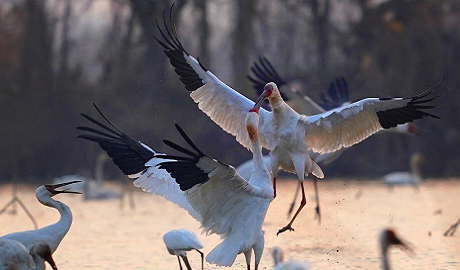

JIUQUAN, Oct. 30 (Xinhua) -- Not all rocket engineers get to strap in and blast off into space, but Wang Haoze made this thrilling leap on Wednesday.
Wang, who used to design system parameters for rocket engines, is carrying out the Shenzhou-19 spaceflight mission along with two other crew members, serving as the country's first female space engineer in the process.
The Shenzhou-19 spaceship, atop a Long March-2F carrier rocket, was launched at 4:27 a.m. (Beijing Time) from the Jiuquan Satellite Launch Center in northwest China.
Born in 1990 in Luanping County, north China's Hebei Province, Wang enrolled at Southeast University to major in thermal energy and power engineering, following her completion of the college entrance examination.
After graduating with a master's degree, Wang joined the Academy of Aerospace Propulsion Technology under the China Aerospace Science and Technology Corporation, and started her career by engaging in rocket engine research.
She later signed up for the selection process to determine the country's third batch of astronauts -- and was finally selected as the only woman in this batch.
After securing selection, Wang and her peers pushed the limits of both body and mind in the course of their training.
During extravehicular activity drills, the astronauts donned spacesuits weighing over 100 kilograms, thereby simulating the challenging maneuvers required to exit a spacecraft. The suits were pressurized at 0.4 atm, and Wang found every movement a struggle. Inside the helmet, her head mobility was restricted and her visibility narrowed, forcing her to rely on a wrist mirror to see beyond this limited range.
Inserting the connector of a hose bundle into two tiny sockets at the waist while in a bulky spacesuit was also no small feat for her. "My hands could barely reach the targets, and I couldn't see well. With thick gloves, I lost the sense of touch, and after a few tries, my arms couldn't gain any strength," Wang recalled.
Determined to improve, she requested additional practice with her instructor, and worked hard to meticulously refine her grip, mirror angle and body positioning. Gradually, she discovered the right technique, transforming the once daunting task into a smooth, fluid motion.
Wang had her own style of self-motivation during training, writing a summary after each major training project as both a record of her experience and a confidence booster.
"Ranging from scorching sunlight to chilling rain, I experienced the extreme temperature fluctuations of the desert, which could vary by tens of degrees Celsius. Yet, I also cherished romantic moments spent lying on umbrella fabric, watching the sparkling galaxy above," she wrote after a 48-hour survival training exercise in the desert.
In another summary, which focused on her maritime training, Wang noted, "The wind and waves created by the helicopter crashed against my body. Even with my back turned, I could feel the roaring wind pounding the back of my head, while the waves lashed against my ears."
In 2023, Wang was chosen to join the Shenzhou-19 crewed spaceflight mission, during which the crew is scheduled to undertake intensive tasks.
Wang, the third Chinese woman to participate in a crewed spaceflight mission, is mainly responsible for space experiment projects and the management of materials and space station affairs.
"From rocket engine designer to space engineer, my identity has changed, yet my unwavering commitment to serving my country through space exploration remains the same," Wang concluded. ■

Lianyungang port welcomes largest group of S. Korean travelers under China's visa-free policy

Hall of Mental Cultivation of the Palace Museum reopens to public

Wuyi rock pigment painting in China's Fujian infuses modern artistic elements into tradition

China-Serbia digital art exhibition explores time, space, heritage

点击右上角![]() 微信好友
微信好友
 朋友圈
朋友圈

请使用浏览器分享功能进行分享
